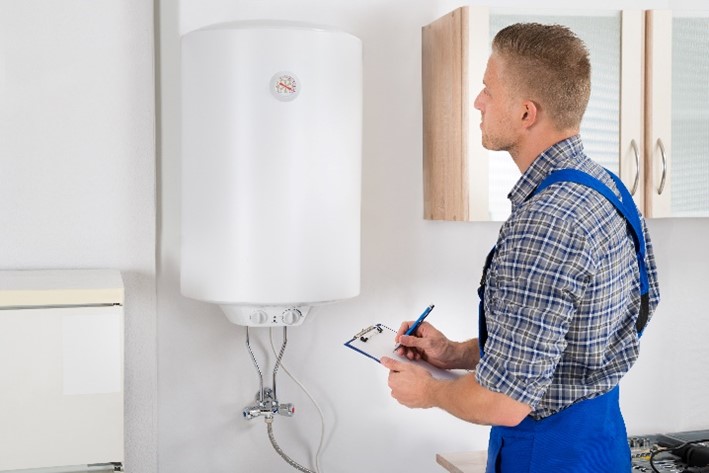Just how do you really feel in regards to What Kind of Maintenance Do Water Heaters Need??

Warm water is essential for daily comfort, whether it's for a rejuvenating shower or cleaning meals. To guarantee your warm water system runs successfully and lasts much longer, normal upkeep is key. This write-up supplies sensible pointers and understandings on just how to maintain your home's hot water system to avoid disruptions and costly repairs.
Intro
Keeping your home's warm water system could appear overwhelming, yet with a couple of basic actions, you can ensure it operates smoothly for years to come. This overview covers every little thing from comprehending your warm water system to do it yourself maintenance tips and recognizing when to employ expert help.
Relevance of Preserving Your Hot Water System
Normal upkeep not only extends the life-span of your hot water system but additionally guarantees it runs efficiently. Neglecting maintenance can lead to decreased efficiency, higher energy bills, and also early failing of the system.
Indicators Your Warm Water System Demands Upkeep
Recognizing when your warm water system requires interest can protect against significant problems. Look out for signs such as irregular water temperature, strange sounds from the heating system, or rustic water.
Flushing the Hot Water Heater
Purging your water heater gets rid of debris accumulation, improving performance and extending its life.
Checking and Changing Anode Rods
Anode rods prevent deterioration inside the tank. Evaluating and changing them when worn out is critical.
Complicated Issues Calling For Expert Help
Instances include significant leaks, electrical issues, or if your water heater is regularly underperforming.
Routine Expert Maintenance Conveniences
Expert upkeep can include thorough evaluations, tune-ups, and making sure conformity with safety criteria.
Checking and Readjusting Temperature Setups
Adjusting the temperature level setups guarantees optimum performance and safety.
Do It Yourself Tips for Maintenance
You can perform a number of maintenance jobs yourself to keep your hot water system in leading condition.
Looking for Leakages
Frequently check pipes and connections for leakages, as these can cause water damage and greater bills.
Recognizing Your Hot Water System
Prior to diving into upkeep tasks, it's helpful to recognize the basic parts of your hot water system. Commonly, this includes the hot water heater itself, pipes, anode poles, and temperature controls.
Month-to-month Maintenance Tasks
Routine monthly checks can assist catch minor concerns before they rise.
Evaluating Stress Relief Valves
Checking the pressure relief valve guarantees it functions properly and prevents extreme stress buildup.
Shielding Pipes
Protecting hot water pipelines reduces heat loss and can conserve power.
When to Call a Professional
While do it yourself upkeep is useful, some problems call for professional know-how.
Conclusion
Regular maintenance of your home's warm water system is essential for efficiency, longevity, and expense financial savings. By following these suggestions and recognizing when to look for specialist aid, you can guarantee a trustworthy supply of hot water without unforeseen disturbances.
Water Heater Maintenance Tips
Test the TPR Valve
Shut off the power and the cold-water supply valve. Place a bucket under the pipe connected to the temperature-pressure-release (TPR) valve on the top or side of the tank. (This valve opens if the tank pressure gets too high.) Lift the valve’s tab to let some water out, then let go. If water keeps flowing, drain the tank partway, unscrew the old valve with a pipe wrench, and install a new one. Check the Anode Rod
Put a hose to the tank’s drain cock and let out a few gallons of water. Now fit a 1 1/16-inch socket onto the rod’s hex head on top of the heater (or under its top plate) and unscrew the rod. If it’s less than ½ inch thick or coated with calcium, buy a new one, wrap its threads with Teflon tape, put it back in the tank, and tighten securely. Use this segmented rod if headroom above the tank is limited. Drain the Tank and Wash Out Sediment
Drain the remaining water in the tank into the bucket, then stir up the sediment on the tank’s bottom by briefly opening the cold-water supply valve. Drain and repeat until clean water comes out of the hose. Close the drain cock, refill the tank, and turn its power back on. Adjust the Temperature
Find the temperature dial on the side of the tank and unscrew its cover. Adjust the dial to 120 degrees using a flathead screwdriver. For every 10 degrees the temperature is lowered, you can expect to save up to 5 percent in energy costs. Turn the water heater off or the thermostat down to its lowest setting if you plan to be away from home for more than three days. Insulate the Pipes
Buy some self-sticking 3/8-inch-thick foam pipe insulation that matches the pipes’ diameter. Slide the foam over the hot-and cold-water pipes as far as you can reach. Insulating the cold-water pipe prevents condensation in summer. Peel the tape and squeeze the insulation closed. If the pipe is 6 inches or less from the flue, cover it with 1-inch-thick unfaced fiberglass pipe wrap. https://www.thisoldhouse.com/plumbing/21016402/how-to-maintain-a-water-heater

As a devoted reader on How to Maintain Your Water Heater & Prolong its Life, I thought sharing that excerpt was a smart idea. Do you know about somebody who is interested by Water Heater Maintenance Tips You Can't Afford to Forget? Feel free to promote it. We value reading our article about Water Heater Maintenance Tips You Can't Afford to Forget.
Go Services